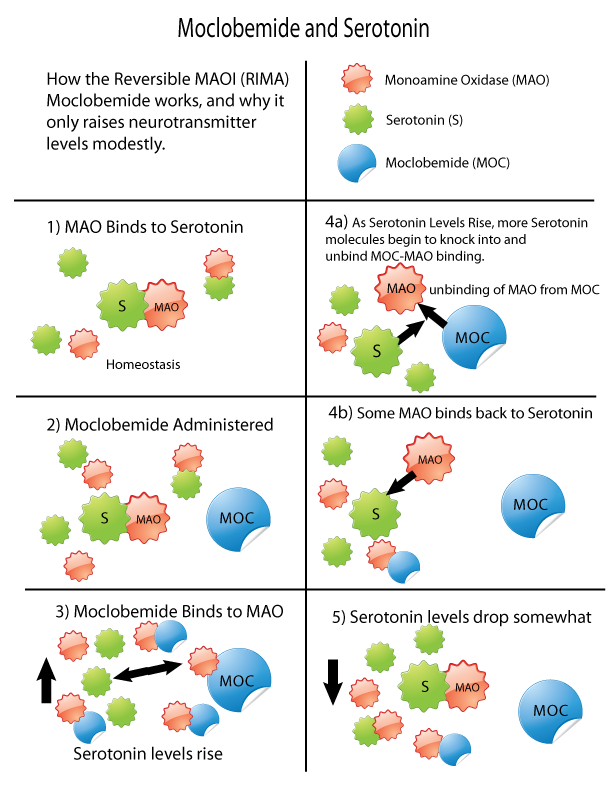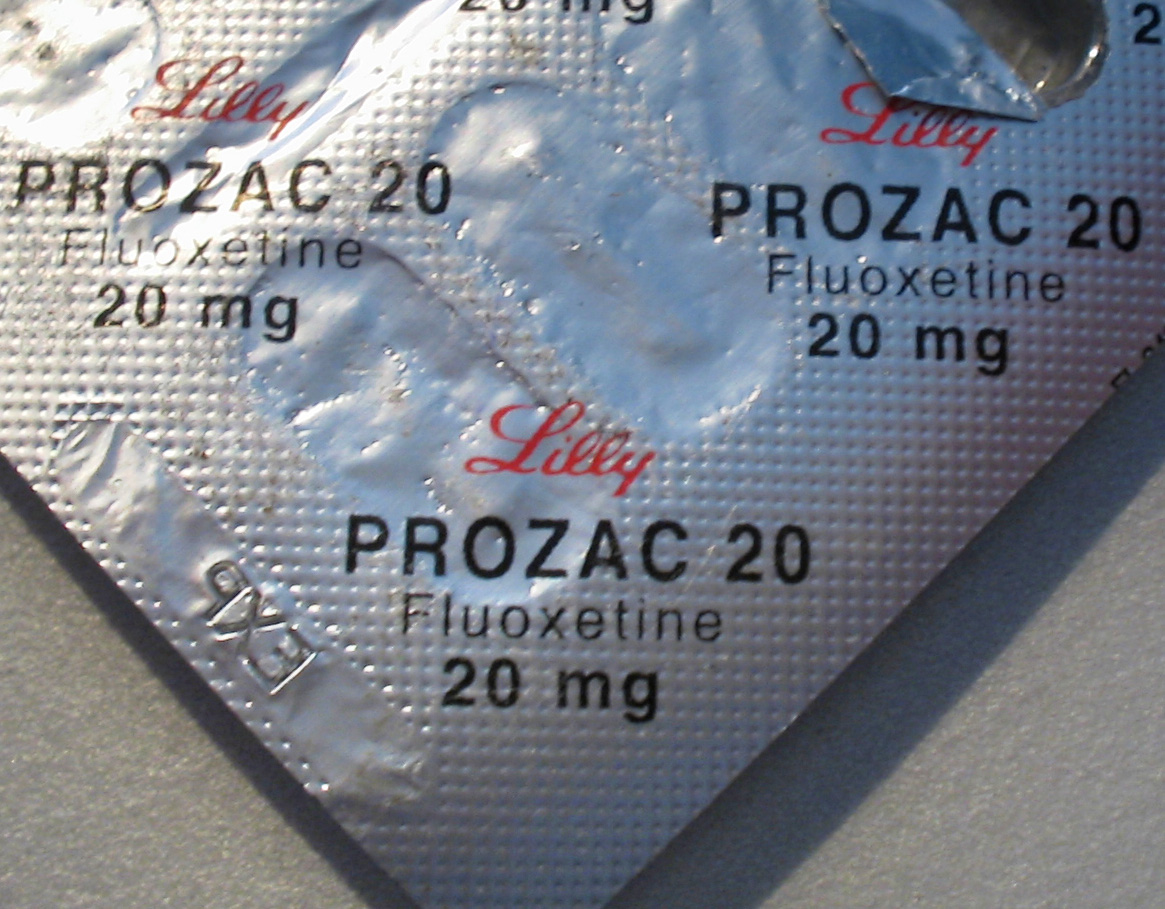|
Bifemelane
Bifemelane (INN) (Alnert, Celeport), or bifemelane hydrochloride (JAN), also known as 4-(''O''-benzylphenoxy)-''N''-methylbutylamine, is an antidepressant and cerebral activator that is widely used in the treatment of cerebral infarction patients with depressive symptoms in Japan, and in the treatment of senile dementia as well. It also appears to be useful in the treatment of glaucoma. Bifemelane acts as a monoamine oxidase inhibitor (MAOI) of both isoenzymes, with competitive (reversible) inhibition of MAO-A (Ki = 4.20 ''μ''M) (making it a reversible inhibitor of monoamine oxidase A (RIMA)) and non-competitive (irreversible) inhibition of MAO-B (Ki = 46.0 ''μ''M), and also acts (weakly) as a norepinephrine reuptake inhibitor. The drug has nootropic, neuroprotective, and antidepressant-like effects in animal models, and appears to enhance the cholinergic system in the brain. See also * Indeloxazine * Teniloxazine Teniloxazine (Lucelan, Metatone), also known as sufoxazin ... [...More Info...] [...Related Items...] OR: [Wikipedia] [Google] [Baidu] |
Indeloxazine
Indeloxazine ( INN) (Elen, Noin) is an antidepressant and cerebral activator that was marketed in Japan and South Korea by Yamanouchi Pharmaceutical Co., Ltd for the treatment of psychiatric symptoms associated with cerebrovascular diseases, namely depression resulting from stroke, emotional disturbance, and avolition. It was marketed from 1988 to 1998, when it was removed from the market reportedly for lack of effectiveness. Indeloxazine acts as a serotonin releasing agent, norepinephrine reuptake inhibitor, and NMDA receptor antagonist. It has been found to enhance acetylcholine release in the rat forebrain through activation of the 5-HT4 receptor via its action as a serotonin releasing agent. The drug has been found to possess nootropic, neuroprotective, anticonvulsant, and antidepressant Antidepressants are a class of medication used to treat major depressive disorder, anxiety disorders, chronic pain conditions, and to help manage addictions. Common side-ef ... [...More Info...] [...Related Items...] OR: [Wikipedia] [Google] [Baidu] |
Cerebral Activator
A cerebral activator, or cerebral metabolic enhancer, is a type of drug that "activates" the central nervous system in the context of cerebrovascular diseases such as stroke and dementia. The term has been used specifically to describe a few Japanese drugs, such as indeloxazine Indeloxazine ( INN) (Elen, Noin) is an antidepressant and cerebral activator that was marketed in Japan and South Korea by Yamanouchi Pharmaceutical Co., Ltd for the treatment of psychiatric symptoms associated with cerebrovascular diseases, ... and bifemelane. References Neuroprotective agents {{nervous-system-drug-stub ... [...More Info...] [...Related Items...] OR: [Wikipedia] [Google] [Baidu] |
Neuroprotective
Neuroprotection refers to the relative preservation of neuronal structure and/or function. In the case of an ongoing insult (a neurodegenerative insult) the relative preservation of neuronal integrity implies a reduction in the rate of neuronal loss over time, which can be expressed as a differential equation. It is a widely explored treatment option for many central nervous system (CNS) disorders including neurodegenerative diseases, stroke, traumatic brain injury, spinal cord injury, and acute management of neurotoxin consumption (i.e. methamphetamine overdoses). Neuroprotection aims to prevent or slow disease progression and secondary injuries by halting or at least slowing the loss of neurons. Despite differences in symptoms or injuries associated with CNS disorders, many of the mechanisms behind neurodegeneration are the same. Common mechanisms of neuronal injury include decreased delivery of oxygen and glucose to the brain, energy failure, increased levels in oxidative st ... [...More Info...] [...Related Items...] OR: [Wikipedia] [Google] [Baidu] |
Phenol Ethers
Phenol (also called carbolic acid) is an aromatic organic compound with the molecular formula . It is a white crystalline solid that is volatile. The molecule consists of a phenyl group () bonded to a hydroxy group (). Mildly acidic, it requires careful handling because it can cause chemical burns. Phenol was first extracted from coal tar, but today is produced on a large scale (about 7 billion kg/year) from petroleum-derived feedstocks. It is an important industrial commodity as a precursor to many materials and useful compounds. It is primarily used to synthesize plastics and related materials. Phenol and its chemical derivatives are essential for production of polycarbonates, epoxies, Bakelite, nylon, detergents, herbicides such as phenoxy herbicides, and numerous pharmaceutical drugs. Properties Phenol is an organic compound appreciably soluble in water, with about 84.2 g dissolving in 1000 mL (0.895 M). Homogeneous mixtures of phenol and wat ... [...More Info...] [...Related Items...] OR: [Wikipedia] [Google] [Baidu] |
Norepinephrine Reuptake Inhibitors
A norepinephrine reuptake inhibitor (NRI, NERI) or noradrenaline reuptake inhibitor or adrenergic reuptake inhibitor (ARI), is a type of drug that acts as a reuptake inhibitor for the neurotransmitters norepinephrine (noradrenaline) and epinephrine (adrenaline) by blocking the action of the norepinephrine transporter (NET). This in turn leads to increased extracellular concentrations of norepinephrine and epinephrine and therefore can increase adrenergic neurotransmission. Medical use NRIs are commonly used in the treatment of conditions like ADHD and narcolepsy due to their psychostimulant effects and in obesity due to their appetite suppressant effects. They are also frequently used as antidepressants for the treatment of major depressive disorder, anxiety and panic disorder. Additionally, many addictive substances such as cocaine and methylphenidate possess NRI activity, though NRIs without combined dopamine reuptake inhibitor (DRI) properties are not significantly reward ... [...More Info...] [...Related Items...] OR: [Wikipedia] [Google] [Baidu] |
Nootropics
Nootropics ( , or ) (colloquial: smart drugs and cognitive enhancers, similar to adaptogens) are a wide range of natural or synthetic supplements or drugs and other substances that are claimed to improve cognitive function or to promote relaxation, particularly boosting mood, executive functions, attention, memory, creativity, or motivation in healthy individuals. The use of cognition-enhancing supplements by healthy individuals in the absence of a medical indication spans numerous controversial issues, including the ethics and fairness of their use, concerns over adverse effects, and the diversion of prescription drugs for non-medical uses. Nonetheless, the international sales of cognitive- or mood-enhancing supplements have continued to grow over time and in 2012 reached 0.69 billion. With sales supported by global health trends, the market is expected to reach US$33.85 billion by the year 2030, at a CAGR of 14.8%. While most nootropics are not regulated, there are oth ... [...More Info...] [...Related Items...] OR: [Wikipedia] [Google] [Baidu] |
Monoamine Oxidase Inhibitors
Monoamine oxidase inhibitors (MAOIs) are a class of drugs that inhibit the activity of one or both monoamine oxidase enzymes: monoamine oxidase A (MAO-A) and monoamine oxidase B (MAO-B). They are best known as effective antidepressants, especially for treatment-resistant depression and atypical depression. They are also used to treat panic disorder, social anxiety disorder, Parkinson's disease, and several other disorders. Reversible inhibitors of monoamine oxidase A (RIMAs) are a subclass of MAOIs that selectively and reversibly inhibit the MAO-A enzyme. RIMAs are used clinically in the treatment of depression and dysthymia. Due to their reversibility, they are safer in single-drug overdose than the older, irreversible MAOIs, and weaker in increasing the monoamines important in depressive disorder. RIMAs have not gained widespread market share in the United States. Medical uses MAOIs have been found to be effective in the treatment of panic disorder with agoraphobia ... [...More Info...] [...Related Items...] OR: [Wikipedia] [Google] [Baidu] |
Antidepressants
Antidepressants are a class of medication used to treat major depressive disorder, anxiety disorders, chronic pain conditions, and to help manage addictions. Common side-effects of antidepressants include dry mouth, weight gain, dizziness, headaches, sexual dysfunction, and emotional blunting. There is a slight increased risk of suicidal thinking and behavior when taken by children, adolescents, and young adults. Discontinuation syndrome may occur after stopping any antidepressant which resembles recurrent depression. Some research regarding the effectiveness of antidepressants for depression in adults has found benefits, whilst other research has not. Evidence of benefit in children and adolescents is unclear. The twenty-one most commonly prescribed antidepressant medications are more effective than placebo for the short-term (acute) treatments of adults with major depressive disorder. There is debate in the medical community about how much of the observed effects of antidepre ... [...More Info...] [...Related Items...] OR: [Wikipedia] [Google] [Baidu] |
Amines
In chemistry, amines (, ) are compounds and functional groups that contain a basic nitrogen atom with a lone pair. Amines are formally derivatives of ammonia (), wherein one or more hydrogen atoms have been replaced by a substituent such as an alkyl or aryl group (these may respectively be called alkylamines and arylamines; amines in which both types of substituent are attached to one nitrogen atom may be called alkylarylamines). Important amines include amino acids, biogenic amines, trimethylamine, and aniline; Inorganic derivatives of ammonia are also called amines, such as monochloramine (). The substituent is called an amino group. Compounds with a nitrogen atom attached to a carbonyl group, thus having the structure , are called amides and have different chemical properties from amines. Classification of amines Amines can be classified according to the nature and number of substituents on nitrogen. Aliphatic amines contain only H and alkyl substituents. Aroma ... [...More Info...] [...Related Items...] OR: [Wikipedia] [Google] [Baidu] |
Teniloxazine
Teniloxazine (Lucelan, Metatone), also known as sufoxazine and sulfoxazine, is a drug which is marketed in Japan. Though initially investigated as a neuroprotective and nootropic agent for the treatment of cerebrovascular insufficiency in the 1980s, it was ultimately developed and approved as an antidepressant instead. It acts as a potent norepinephrine reuptake inhibitor, with fair selectivity over the serotonin and dopamine transporters, and also behaves as an antagonist of the 5-HT2A receptor. See also * Bifemelane * Indeloxazine * Viloxazine Viloxazine, sold under the brand name Qelbree and formerly as Vivalan among others, is a noradrenergic medication which is used in the treatment of attention deficit hyperactivity disorder (ADHD) in children and adults. It was marketed for almos ... References {{Serotonin receptor modulators Antidepressants Morpholines Thiophenes Phenol ethers ... [...More Info...] [...Related Items...] OR: [Wikipedia] [Google] [Baidu] |
Brain
The brain is an organ that serves as the center of the nervous system in all vertebrate and most invertebrate animals. It consists of nervous tissue and is typically located in the head ( cephalization), usually near organs for special senses such as vision, hearing and olfaction. Being the most specialized organ, it is responsible for receiving information from the sensory nervous system, processing those information (thought, cognition, and intelligence) and the coordination of motor control (muscle activity and endocrine system). While invertebrate brains arise from paired segmental ganglia (each of which is only responsible for the respective body segment) of the ventral nerve cord, vertebrate brains develop axially from the midline dorsal nerve cord as a vesicular enlargement at the rostral end of the neural tube, with centralized control over all body segments. All vertebrate brains can be embryonically divided into three parts: the forebrain (prosencep ... [...More Info...] [...Related Items...] OR: [Wikipedia] [Google] [Baidu] |



